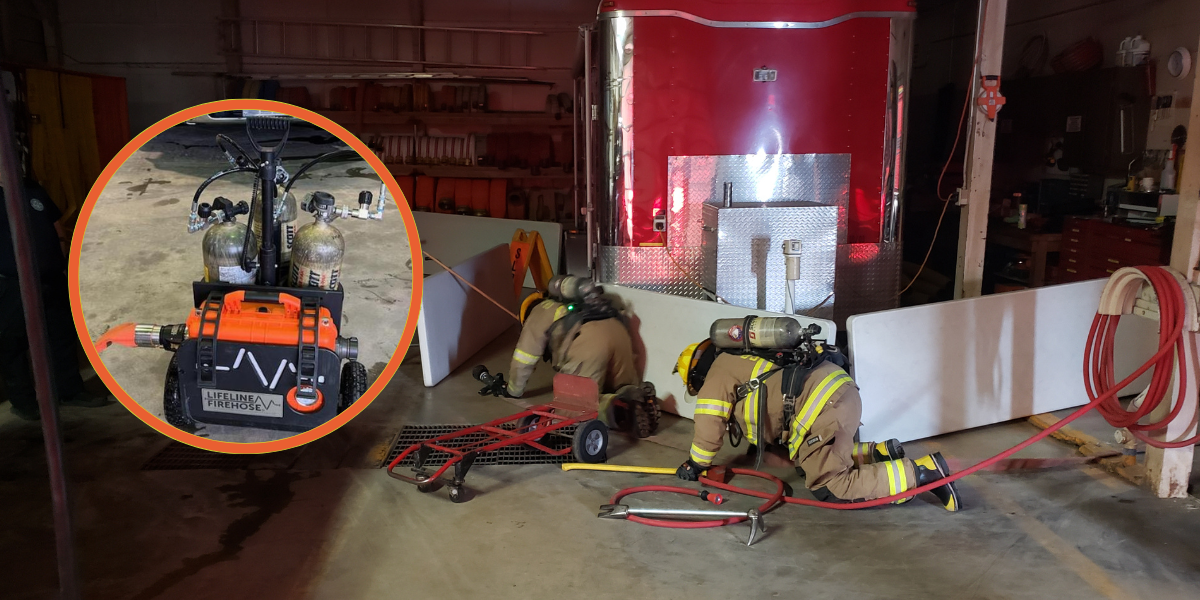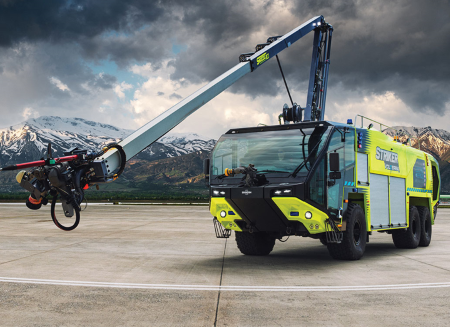A changing safety culture – in search & rescue training
Paul McDonnell, Managing Director of Ruth Lee Ltd, writes for
International Fire Buyer about the developments and training products available to fire-fighters in various parts of the world
We at Ruth Lee recently played host to some of our international distributors at a picturesque location on the coast of North Wales. We had invited business owners from Canada, Australia, Malaysia, Israel, and several European countries, so you can imagine that a lot of the discussion we took part in was about comparing and contrasting the different approach to training in various parts of the world.
In parts of Asia (and we suspect elsewhere) it is not uncommon for the ‘office junior’ to be thrown in to the river, to be then subsequently ‘rescued’ as part a monthly training exercise for Search & Rescue professionals. All this sounds like a lot of fun, unless you happen to be the protagonist! To pick on the employee with the least experience might not be the best strategy to retain staff.
This carefree approach is reminiscent of the past in the UK. Lawrence Lee, the company’s Export Director, enjoyed several years as a fire-fighter in the Merseyside brigade, and recalls with a wry smile being lifted down a ladder on the shoulders of a colleague. These days most of us would see this as an avoidable risk. Insurance companies and health and safety officials would no doubt agree.
Using real people for training exercises is of course not uncommon. Mark and Dave, from the Emergency Services Training Centre on the Wirral, wake up most Thursdays knowing that they will once again be ‘shot’ by a Police tactical fire arms operative, as part of a hostage scenario they help to act out on a weekly basis. It’s all in the name of training; ensuring that emergency services professionals are equipped to deal with whatever is thrown at them.
Often, though, real people shouldn’t (and don’t need to) be used in training exercises. Even in the example above there is always a degree of anxiety for the ‘casualty,’ and perhaps a risk of injury or even death – unfortunately it wouldn’t be the first
time that live ammunition had been inadvertently used instead
of blanks.
Most training scenarios would prescribe the use of manikins, for this reason. Think about rescuing a real person from a blazing fire, or from the edge of a cliff face. Should naval helicopters be searching for, and rescuing, real people from the Atlantic? Who wants to be trapped in a cave for three hours waiting (and hoping) for a rescue party to find them? These days, with a much stronger health & safety ‘culture’ it is generally considered best practice to use manikins for potentially dangerous training exercises.
Of course there are practical reasons too. Volunteers are not always readily available, nor are actors, who would usually charge for their services – itself an issue when budgets are stretched. Manikins can be stored in the training manager’s cupboard and can be called to action on the spur of the moment if necessary. It also makes sense to use manikins where training is conducted regularly, which is the case for most of the Emergency Services, as well as specialist training providers and the armed forces.
Another clear trend is for the desire to offer training which is as realistic as possible. There are some fantastic facilities around the UK – Waddington (confined space training) RNLI Training Centre in Poole, Survivex in Aberdeen, and Suffolk Fire Service at Wattisham Airfield, to name just a few. On the other hand we hear many stories about brigades who, in the middle of a training exercise, are suddenly confronted with A4 sheets of paper conveying that ‘this building is on fire.’ Is this a sign of austerity, or lack of creativity and engagement on behalf of the training manager?
Training must be realistic, to be truly effective. The closer you can get to reality, the more the message sinks in, and the better prepared you are for the real thing. Ruth Lee believes firmly in this philosophy; one which has governed our approach over the last thirty years, since the day Merseyside Fire brigade first approached Mrs Ruth Lee to repair their dummy. She realised immediately that she could do a much better job at making more realistic manikins. Other brigades clearly concurred, as we now supply all of them up and down the country, and in many parts of the world.
The increasing use of manikins for training, imposes extra demands onproduct quality and durability, as they are often used in extreme circumstances: Trapped under a heavy vehicle, or in a collapsed building, buried under an avalanche, pulled from a burning plane, hauled out of the bottom of a deep lake, or left hanging from the tallest of buildings.
To stand up to such harsh conditions one of the textiles we use for our manikins is the same flame retardant material used in Police ballistic/stab vests, which offers four times the strength and abrasion resistance of 16oz canvas or P.V.C used for previous models. Optional extras include drag protectors, and spare overalls and boots, which greatly extend the life of the product.
The wide range of manikins we offer reflects the drive we have to offer realism in training scenarios. Our multi-trauma manikin simulates a loss of limbs and impalement, often used in road traffic accident exercises. These days, first responders are expected to be able to carry out basic CPR and Airway Management procedures, so we offer manikins with anatomical features for training purposes. Our ligature manikin is used in courses to promote sensitive and safe management of deaths by hanging – unfortunately a scenario which is on the increase. Manikins simulating a drowned victim will sink, whilst unconscious casualties should float. Our working-at-height manikin is specially constructed to avoid slumping, when suspended in a sling.
It’s about making training as realistic as possible, and this was what the North & Mid Wales Trunk Road Agency had in mind when they approached us recently. They asked us to help set up an emergency situation in the Conwy tunnel, in North Wales. Their idea was to simulate a car crash with two vehicles having burst into flames, causing that area of the tunnel to fill with smoke. Other vehicles were involved and people were panicking. How would the Emergency Services handle this, and what could Ruth Lee do to help create the scenario?
Aside from manikins, Ruth Lee supplies a range of smoke machines, lighting and theatrical props, which, when used properly in unison, can simulate scenarios which have to be seen to be believed. We work closely with our partner in Holland, Fireware, who are experts in creating realistic training environments, on a small or large scale. Even the most seasoned fire-fighters take photos and videos of the scenarios we create, to show their colleagues back at the station. The Conwy tunnel exercise was a great success. Lots was learned on the night, which is what training is all about, after all.
Back to our conference in North Wales, and an international perspective. In other parts of the world there is a clear drive towards improved quality, and realistic training. ‘Home made’ dummies filled with sand, or sawdust, or old rags, are increasingly being replaced by manikins which are properly weighted to simulate a real person, and are durable enough to withstand extreme training scenarios. Tailored courses, eg for bariatric or confined space rescues, require specific products to satisfy training needs. Children and animals also need rescuing too…which we also cater for.
These global trends for quality and realism are accelerating, as training managers from markets with more advanced training and health and safety ‘cultures’, are being invited by their counterparts in less sophisticated markets, to share their knowledge and training methods.
The office junior will no doubt be very pleased about that!
www.ruthlee.co.uk








